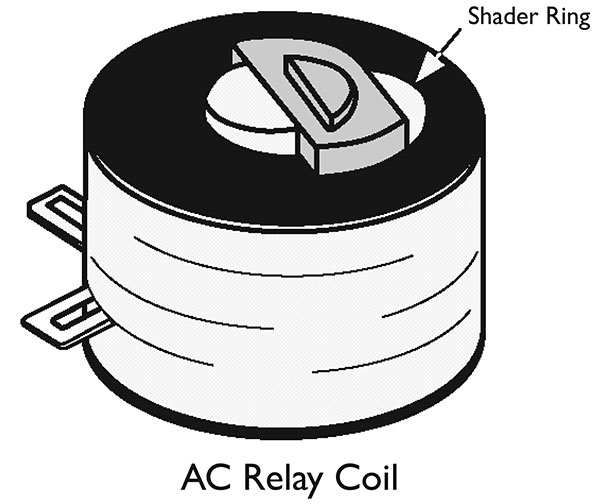With TJ Byers
AC Relays Are a Shady Deal
Question:
Could you please explain the difference between a DC relay coil and an AC relay coil? This has been bugging me for many years and I haven’t been able to find an explanation.
Lee Marker
via Internet
Answer:
AC relays are generally constructed like DC electromechanical relays with a portion of the core pole face separated from the rest of the pole face and enclosed in a loop of copper (see figure below). This loop — called a shaded pole — produces a lag in the timing of the AC magnetic flux between the faces of the pole. While the current in the coil passes through zero twice each cycle, the flux in the armature gap remains at a high enough level to hold the armature in place.

The current drawn by a shaded pole relay is determined by the AC impedance of the coil at the power line frequency, which depends on the coil construction and the armature position.
For example, the impedance of a relay may be twice as large with the armature engaged as with it deenergized. Consequently, the window between the pull-in and drop-out currents is much narrower than with a DC relay. Some relays can’t remain energized or may chatter badly if the coil current drops to half of the rated pick-up value.


Comments